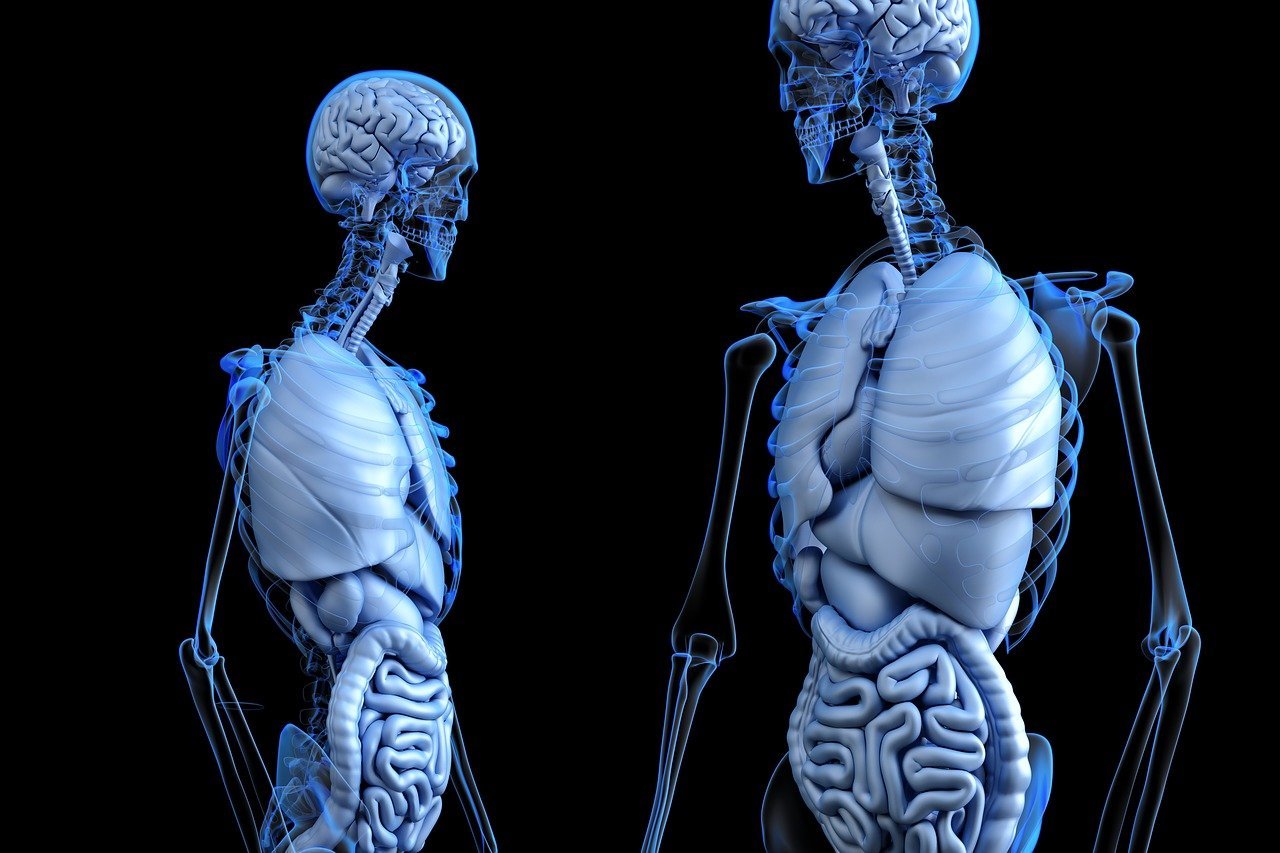
Are you tired of waking up every morning with a nagging neck pain that sets the tone for the rest of your day? If so, you’re not alone. Many people struggle with this common issue, but the good news is that there are simple and effective ways to alleviate that discomfort. In this article, we will explore some easy techniques and adjustments that can make a significant difference in how you feel when you wake up, leaving you refreshed and ready to take on the day without the added burden of neck pain.
Causes of Neck Pain When Waking Up

Sleeping Position
One of the main causes of neck pain when waking up is the sleeping position. Sleeping in an improper position can put strain on the neck muscles and result in stiffness and discomfort. The position you sleep in can determine the amount of stress that is placed on your neck throughout the night. It is important to find a sleeping position that allows for proper alignment of the spine and supports the natural curve of your neck.
Pillows
The type of pillow you use can greatly affect your neck health. A pillow that is too high or too low can cause misalignment of the spine and contribute to neck pain. It is important to choose a pillow that provides adequate support for your neck and keeps your spine in a neutral position during sleep. Additionally, the material and firmness of the pillow can also impact your sleep quality and neck comfort.
Mattress
A worn-out or unsupportive mattress can be a significant factor in causing neck pain when waking up. A mattress that is too firm or too soft may not provide the necessary support for your body, leading to poor alignment and increased pressure on your neck. It is essential to choose a mattress that suits your individual needs and promotes proper spinal alignment.
Stress and Tension
Stress and tension can manifest in various ways, and one common symptom is neck pain. When we experience stress or tension, our muscles tend to tighten up, including those in the neck and shoulders. This can lead to muscle imbalances and discomfort. Finding effective ways to manage stress, such as practicing relaxation techniques and engaging in stress-reducing activities, can help alleviate neck pain when waking up.
Poor Posture
Maintaining good posture throughout the day is crucial for overall spinal health, including the neck. However, poor posture, whether it is while sitting, standing, or sleeping, can contribute to neck pain. When we adopt positions that strain the neck, such as hunching forward or sleeping in awkward positions, it puts unnecessary stress on the muscles and joints in the neck and can result in pain and stiffness.
Medical Conditions
In some cases, neck pain when waking up may be a symptom of an underlying medical condition. Conditions such as cervical spondylosis, herniated discs, or arthritis can cause neck pain that is exacerbated by sleep. It is essential to consult a healthcare professional if you experience persistent or severe neck pain, especially if it is accompanied by other symptoms such as numbness, tingling, or weakness in the arms or hands.
Choosing the Right Sleeping Position
Back Sleeping
Sleeping on your back is generally considered the best position for spinal alignment and neck health. It allows for even distribution of weight and minimizes pressure points. To optimize your back sleeping position, use a pillow that adequately supports the natural curve of your neck and keeps your head aligned with your spine. Placing a small pillow or rolled-up towel under your knees can also help maintain the natural curvature of your lower back.
Side Sleeping
Side sleeping is a popular position, but it can put strain on the neck if not properly supported. When sleeping on your side, it is important to choose a pillow that keeps your head and neck in proper alignment with your spine. A thicker pillow may be necessary to fill the gap between your ear and shoulder, ensuring neutral alignment. Additionally, placing a pillow or rolled-up towel between your knees can help reduce stress on your hips and lower back.
Stomach Sleeping
Sleeping on your stomach is generally not recommended as it can strain the neck and lead to misalignment of the spine. When you sleep on your stomach, your head is often forced to turn to one side, putting excessive stress on the neck muscles and joints. If you find it difficult to change your sleeping position, use a thin pillow or no pillow at all to reduce strain on your neck.
Pillow Support
Regardless of your preferred sleeping position, using a pillow that provides proper support for your neck is crucial. Look for pillows specifically designed to support the natural curvature of the neck, such as contour pillows or cervical pillows. These pillows are typically made of memory foam or other supportive materials that conform to the shape of your neck, reducing pressure points and promoting optimal spinal alignment.
Selecting the Right Pillows
Proper Pillow Height
The height of your pillow is important for maintaining proper spinal alignment and reducing neck pain. The ideal pillow height will depend on your sleeping position and personal preference. Side sleepers generally require a thicker pillow to keep their head and neck aligned with their spine. Back sleepers typically benefit from a medium-height pillow that supports the natural curve of the neck. Stomach sleepers should opt for a thin pillow or no pillow at all to avoid excessive strain on the neck.
Neck Support
A pillow that provides adequate neck support is essential for preventing and relieving neck pain. Look for pillows that have a contour shape or a built-in neck roll. These designs help cradle the neck and promote proper alignment. Memory foam pillows are often a popular choice as they mold to the shape of your neck, providing personalized support and pressure relief.

Material and Firmness
The material and firmness of the pillow can impact both your sleep quality and neck comfort. Memory foam pillows contour to your head and neck, providing reliable support and cushioning. Latex pillows are known for their durability and responsiveness. Feather and down pillows offer a plush feel but may require regular fluffing to maintain their shape and support. Cooling pillows made of gel-infused memory foam or other breathable materials can help regulate temperature and prevent overheating during sleep.
Replacing Old Pillows
It is important to replace your pillows regularly to ensure optimal support and hygiene. Over time, pillows can lose their shape and become less supportive. A worn-out pillow may contribute to neck pain and disrupt your sleep quality. As a general guideline, consider replacing your pillows every 1 to 2 years or when they no longer provide adequate support.
Finding the Right Mattress
Firmness Level
The firmness level of your mattress is a personal preference, but it can greatly impact your sleep comfort and neck health. A mattress that is too firm can create pressure points and cause misalignment of the spine, leading to neck pain. On the other hand, a mattress that is too soft may not provide enough support for proper spinal alignment. Opt for a medium-firm mattress that provides a balance of comfort and support for your body.
Supportive Mattress
A supportive mattress is crucial for maintaining proper spinal alignment and reducing neck pain. Look for a mattress that contours to your body’s natural curves and provides even support for your shoulders, hips, and spine. A mattress with adequate support can help distribute your body weight evenly, reducing pressure on your neck and promoting a more restful sleep.
Memory Foam Mattresses
Memory foam mattresses are known for their ability to conform to the shape of your body, providing personalized support and pressure relief. They can be particularly beneficial for individuals with neck pain as they help distribute weight evenly and minimize pressure points. Memory foam mattresses also absorb motion, making them a suitable choice for couples who share a bed.
Replacing Old Mattresses
Like pillows, mattresses can become worn out and lose their supportive properties over time. If your mattress is sagging, lumpy, or causing discomfort, it may be time to invest in a new one. On average, mattresses should be replaced every 7 to 10 years, depending on their quality and usage. A new, supportive mattress can greatly improve your sleep quality and alleviate neck pain when waking up.
Tips to Reduce Stress and Tension
Stress management techniques
Implementing effective stress management techniques can help reduce muscle tension and prevent neck pain. Engage in activities that help you relax and unwind, such as deep breathing exercises, yoga, or engaging in hobbies. Finding healthy outlets for stress can significantly improve your overall well-being and contribute to better sleep quality.
Relaxation exercises
Practicing relaxation exercises before bedtime can help calm the mind and relax the muscles, including those in the neck and shoulders. Techniques such as progressive muscle relaxation, guided imagery, and deep breathing can help release tensions and promote a sense of calmness, leading to more restful sleep and reduced neck pain.
Meditation and mindfulness
Incorporating meditation and mindfulness practices into your daily routine can have a positive impact on your stress levels and overall health. Taking a few minutes each day to sit quietly, focus on your breath, and cultivate mindfulness can help alleviate stress and tension that may contribute to neck pain. Additionally, mindfulness can improve your sleep quality and promote relaxation.
Creating a bedtime routine
Establishing a consistent bedtime routine can signal to your body that it’s time to wind down and prepare for sleep. Engage in relaxing activities such as reading, taking a warm bath, or listening to calming music. Avoid stimulating activities and bright screens in the hour leading up to bedtime. A regular bedtime routine can help promote a deeper, more restorative sleep and reduce neck pain upon waking.
Improving Overall Posture
Ergonomic workspace setup
Maintaining proper posture throughout the day, including when working, is important for minimizing strain on the neck and preventing pain. Set up your workspace in an ergonomic manner, ensuring that your computer monitor is at eye level and your keyboard and mouse are positioned comfortably. Use an adjustable chair that provides support for your lower back and encourages a neutral spine.
Posture-correcting exercises
Incorporating posture-correcting exercises into your daily routine can help strengthen the muscles that support good posture and alleviate neck pain. Exercises such as shoulder retractions, chin tucks, and upper back stretches can help improve posture, relieve muscle tension, and promote better alignment of the spine.

Maintaining proper alignment during sleep
In addition to choosing the right sleeping position, maintaining proper alignment of your spine during sleep is crucial for reducing neck pain. Use supportive pillows and mattresses that promote neutral alignment. Avoid sleeping in positions that strain the neck, such as sleeping on your stomach. If necessary, use pillows or rolled-up towels to support your body and maintain proper alignment.
Using posture braces
Posture braces or posture correctors can be useful tools for improving posture and reducing neck pain. These devices provide support and encourage proper alignment of the spine. However, it is important to use them as directed by a healthcare professional and in conjunction with exercises and stretches to strengthen the supporting muscles.
Exercises and Stretches for Neck Pain
Neck rotations
Neck rotations can help relieve tension and stiffness in the neck muscles. Sit or stand with your spine tall and slowly turn your head to the right until you feel a gentle stretch. Hold for a few seconds, then return to the center. Repeat on the left side. Perform 5 to 10 repetitions on each side, moving slowly and without forcing the movement.
Shoulder rolls
Shoulder rolls can help improve mobility in the shoulders and relieve tension in the neck. Stand or sit with your arms relaxed at your sides. Roll your shoulders up, back, down, and forward in a smooth, circular motion. Perform 10 to 15 rolls in one direction, then reverse the direction.
Chin tucks
Chin tucks are a great exercise for strengthening the muscles that support good posture and reducing neck pain. Sit or stand with your spine tall and gently tuck your chin in towards your chest, without tilting your head forward. You should feel a slight stretch in the back of your neck. Hold for a few seconds, then return to the starting position. Repeat 10 to 15 times.
Upper back stretches
Stretching the upper back can help relieve tension in the neck and promote better posture. Stand with your feet shoulder-width apart and clasp your hands in front of you. Round your back and reach forward, allowing your head to hang down. Hold the stretch for 20 to 30 seconds, then slowly return to the starting position. Repeat 3 to 5 times.
Heat and Cold Therapy
Applying heat therapy
Heat therapy can help relax muscles and relieve stiffness in the neck. Apply a warm compress, such as a heating pad or hot water bottle, to the affected area for 15 to 20 minutes. Take caution not to apply excessive heat that may cause burns. Heat therapy is especially beneficial for injuries or muscle strains.
Using cold packs
Cold packs can help reduce inflammation and numb pain in the neck. Wrap an ice pack or a bag of frozen peas in a thin towel and apply it to the area for 10 to 15 minutes. Perform cold therapy in intervals, allowing the skin to recover from the cold sensation. Cold packs are particularly useful for acute injuries or sudden neck pain.
Alternating heat and cold therapy
Alternating between heat and cold therapy can provide additional relief for neck pain. Start with a warm compress for 10 minutes, then switch to a cold pack for 5 minutes. Repeat this cycle a few times, always ending with a cold pack. This contrast therapy can help reduce inflammation, soothe muscles, and promote healing.
Duration and precautions
When using heat or cold therapy, it is important to pay attention to your body’s response and not exceed recommended durations. If you have circulatory issues or conditions that affect sensation, consult a healthcare professional before using heat or cold therapy. Always use a barrier, such as a towel, between your skin and the heat or cold source to prevent burns or frostbite.
Massage and Self-Care Techniques
Self-massage techniques
Self-massage can help relax tight muscles and alleviate neck pain. Use your fingertips or palms to gently knead the muscles in your neck and shoulders. Apply firm but comfortable pressure and focus on areas of tension. You can also use circular motions or long strokes to promote blood flow and relaxation.
Use of massage tools
Massage tools, such as foam rollers or handheld massagers, can be beneficial for targeting specific areas of tension in the neck and upper back. Foam rollers can help release tightness in the muscles, while handheld massagers provide a more targeted and deep tissue massage. Follow the instructions provided with the massage tool and be mindful of applying excessive pressure.
Foam rolling
Foam rolling the upper back and neck can help release tension and improve flexibility. Lie on your back with a foam roller positioned under your upper back. Use your legs to roll the foam roller up and down the length of your upper back. You can also target specific areas by pausing and applying gentle pressure. Avoid rolling directly on the neck to prevent injury.
Neck traction devices
Neck traction devices can help elongate the spine, relieve pressure on the discs, and improve alignment of the neck. These devices gently stretch the neck, promoting decompression and alleviating pain. However, it is important to consult a healthcare professional before using neck traction devices, as they may not be suitable for everyone and should be used with caution.
When to Seek Medical Help
Persistent or severe pain
If you experience persistent or severe neck pain that does not improve with self-care measures, it is advisable to seek medical help. A healthcare professional can evaluate your symptoms, perform a physical examination, and recommend appropriate treatment options. They may also order diagnostic tests, such as imaging, to identify any underlying causes of your neck pain.
Accompanying symptoms
If your neck pain is accompanied by other symptoms, such as numbness, tingling, weakness in the arms or hands, or difficulty in controlling bowel or bladder function, it may indicate a more serious underlying condition. These symptoms may be associated with nerve compression or spinal cord involvement and should be evaluated by a healthcare professional promptly.
Underlying medical conditions
Certain medical conditions, such as cervical spondylosis, herniated discs, or arthritis, can cause or contribute to neck pain. If you have a known medical condition that affects the neck or spine, it is important to consult your healthcare professional for appropriate management and treatment. They can provide tailored recommendations based on your specific condition and help alleviate your neck pain.
Consulting a healthcare professional
If your neck pain is persistent, worsening, or significantly impacting your daily life, it is best to consult a healthcare professional. They can assess your symptoms, diagnose any underlying conditions, and recommend a suitable treatment plan. With proper medical guidance, you can address the root cause of your neck pain and find relief, allowing you to wake up without discomfort.
In conclusion, neck pain when waking up can have various causes, including sleeping position, pillows, mattresses, stress and tension, poor posture, and underlying medical conditions. By choosing the right sleeping position, selecting supportive pillows and mattresses, reducing stress and tension, improving overall posture, performing exercises and stretches, using heat and cold therapy, practicing self-care techniques, and seeking medical help when necessary, you can alleviate neck pain when waking up and promote better neck health overall. Remember to prioritize your sleep and neck comfort, as they play a vital role in your overall well-being.







